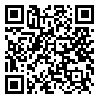BibTeX | RIS | EndNote | Medlars | ProCite | Reference Manager | RefWorks
Send citation to:
URL: http://bloodjournal.ir/article-1-8-en.html
Abstract
�
Background and Objectives
One of the suitable ways to find access to safe blood supply is to use regular donors as low-risk population in regard to blood-transmitted diseases. Thus, in this study, the population of regular donors of Arak city in the first six months of the year 1382 (2004) registered in the Recruitment Unit of Arak Blood Center were evaluated.
Materials and Methods
In this study, 3620 regular donors (37 percent of the whole donors) registered in the Recruitment Unit were selected as subjects they then were evaluated based on age, gender, marital status, education level, and job.
Results
89.6 and 10.4 percent of the donor population were male and female respectively 82.2 percent of the member regular donors were married and 17.8 single (P<0.01). 51.85 percent of the population acted as employees, laborers, and military staff all corsidered as wage-earning jobs. 34.4 percent have free jobs, are households and university students, and the remaining 4.75 percent act as soldiers, farmers, students, or are jobless (P<0.01). The higher percentage of member regular donors pertains to donors at the age group of 21-45.
Conclusions
In the present study, the male subjects at the age range of 21-45 being married, wage-earner with diploma degree or higher were considered to be the main stratum of regular blood donors. Therefore, through planning to encourage and attract the above stratum, it would be possible to raise the number of regular donors and help them maintain the donation trend. However, one should not overlook the female population and attempts should be made to increase the number of regular female donors by appropriate propaganda and promotion.
�
�
Key words: Regular donors, Gender, Marrital status, Age, Job, Education
| Rights and permissions | |
 |
This work is licensed under a Creative Commons Attribution-NonCommercial 4.0 International License. |






